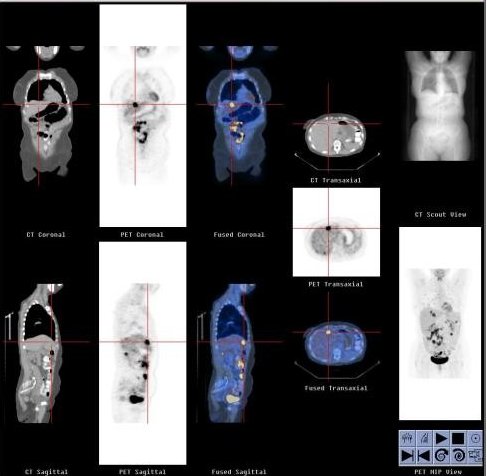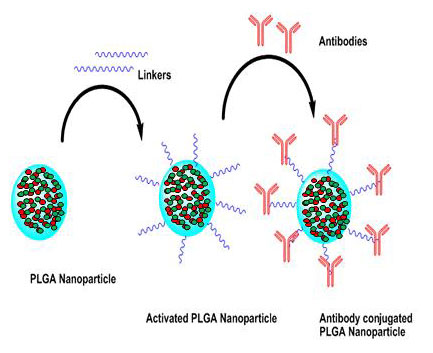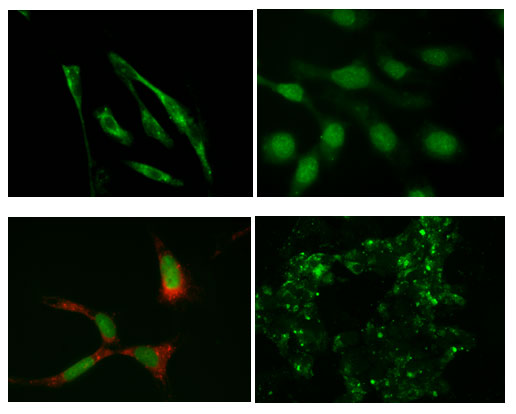
Anthony McGoron, Ph.D.

Professor
 Research Interests: Drug Delivery and Drug Transport Modeling
Research Interests: Drug Delivery and Drug Transport ModelingResearch Advancements: Anthony McGoron develops targeted image-guided drug-delivery for combatting cancer
Research Area: Diagnostic Bioimaging Sensor Systems
Lab: Drug Delivery and Imaging Guided Therapy Laboratory
Website: https://bme.fiu.edu/people/faculty-instructors/anthony-mcgoron/
Biography
Dr. Anthony McGoron is a Professor of Biomedical Engineering and Associate Dean for Academic Affairs at the College of Engineering and Computing. He received his PhD in Biomedical Engineering from Louisiana Tech University and post-doctoral training in the Department of Pharmacology and Cell Biophysics at the University of Cincinnati College of Medicine. Before Joining FIU he was as Assistant Professor at the University of Cincinnati Department of Radiology, Divisions of Nuclear Medicine and Medical Physics. He is a Fellow of the American Institute for Medical and Biological Engineering (AIMBE). He served as Interim Chair of the Department of Biomedical Engineering from 2007-2010. He was National President to the Alpha Eta Mu Beta Biomedical Engineering Honor Society 2010-2014. He has over 200 journal articles, book chapters and proceeding papers. He has received funding from the NIH, NSF, DOD, AHA, and Fl-DOH as well as numerous companies.
Lab Website
Research
Drug delivery research may involve the design of new drugs, or developing strategies to monitor and improve drug transport to target tissue. The primary research focus in this lab is the development of tissue or cell specific contrast agents and probes (both optical and radioactive) for noninvasive molecular imaging of cellular and tissue characterization, for monitoring toxicity, for tracking the biodistribution of known toxins and drugs, and image guided therapy. Another focus is the development of multimodal drugs that simultaneously image and provide therapy. Of primary concern as new drugs are developed is that these drugs be specific in terms of their mechanism and site of action. Verifying that the drug has reached their target is an important component of therapy.
Molecular Imaging allows visualization of not only organs and cells but also biochemical processes within the cells that are associated with specific disease. This information can improve the accuracy of a diagnosis, provide better assessment of the severity of disease and even monitor the response to therapy. Light at the near-infrared wavelength can penetrate deeper into tissue than can visible light and does not induce DNA damage. Therefore, true in vivo imaging is practical with near-infrared probes. Dyes that absorb energy in the near-infrared region will release heat following exposure to the appropriate wavelength and can kill cancer cells. Therefore, by including such dyes with the chemotherapy agent or incorporating the dye into the drug delivery vehicle, therapy can be targeted since the drug will not be activated until it has reached its intended target. The therapy is image guided because the probe/therapeutic drug can be detected in vivo. Compared to optical imaging, Positron Emission Tomography (PET) has the advantage of greater resolution and greatly reduced attenuation and scattering. In addition, the radiolabeling of drugs or biochemically important molecules with PET isotopes is much simpler, and typically results in chemicals with similar or identical properties to the original chemical. Such imaging approaches have been applied to understand the molecular basis of diseases, biochemical processes, gene delivery and expression, tissue receptor-ligand activity, enzyme mediated processes, drug discovery, monitoring novel therapy techniques, etc.
Particles in a size range of 110-140 nm seem to be ideal drug delivery vehicles because they first avoid liver uptake, which filters smaller particles, but are small enough not to be removed by macrophages. For optimal performance, particles should have a small size distribution, uniform surface properties, must be able to complex various molecules very efficiently, must remain in the circulation long enough to be removed by the target tissue rather than the reticuloendothelial system (macrophages), and must be biocompatible and biodegradable. Small particles with neutral surfaces and prepared with polymers of high molecular weights are slowly cleared by macrophages while large particles with high surface potentials and prepared with polymers of low molecular weights are rapidly cleared by the macrophages. Nanoparticles coated with a higher molecular weight dextran or poly-ethylene-glycol (PEG) leads to a decrease of the surface charge, which increases their circulation time. Nanoparticles (polymer or liposomes) can be modified to target specific cells and designed to carry multiple therapeutic agents and multiple imaging probes.
Radiochemistry and Dosimetry
We are developing PET radiochemicals that report regional metabolic/functional variables of various organs or tumors, and examining their cellular uptake kinetics. In addition to clinical studies, tests are conducted in whole animal, isolated organ and isolated cell models. We are developing tools for automatic segmentation and registration of organs and tumors to accurately determine tumor functional and anatomical volumes which is required for accurate dosimetry calculations for Selective Internal Radiation Therapy (SIRT) planning.
 |  |
PET/CT image of a patient with liver cancer demonstrating the mismatch between the functional and anatomical size of the tumor, which can negatively impact patient response to therapy.
Respiratory Gated Positron Emission Tomography (PET)
 PET glucose metabolism is often used to diagnose cancer since the fast growing highly metabolic tumor requires more energy than surrounding tissue. An accurate diagnosis requires a precise measure of the size of the tumor. But, due to the movement of the lungs during respiration, obtaining an accurate image of a lung or liver tumors is difficult. We are developing instrumentation and imaging processing algorithms to gate the PET camera acquisition with the patient’s respiratory motion to reduce the lung motion artifacts. Recently PET has been combined with CT, which provides anatomy. In addition to supplying an anatomic reference for the PET metabolic image, the CT is also used to correct for attenuation of the PET to improve image quality. In order to apply CT attenuation correction to imagines of tissue in the lung, a computer-assisted automatic identification of lung lesions in the PET/CT images is being developed to account for the movement of the lungs during the PET imaging.
PET glucose metabolism is often used to diagnose cancer since the fast growing highly metabolic tumor requires more energy than surrounding tissue. An accurate diagnosis requires a precise measure of the size of the tumor. But, due to the movement of the lungs during respiration, obtaining an accurate image of a lung or liver tumors is difficult. We are developing instrumentation and imaging processing algorithms to gate the PET camera acquisition with the patient’s respiratory motion to reduce the lung motion artifacts. Recently PET has been combined with CT, which provides anatomy. In addition to supplying an anatomic reference for the PET metabolic image, the CT is also used to correct for attenuation of the PET to improve image quality. In order to apply CT attenuation correction to imagines of tissue in the lung, a computer-assisted automatic identification of lung lesions in the PET/CT images is being developed to account for the movement of the lungs during the PET imaging.
PET and CT images from a GE Discover LS Hybrid PET/CT from Baptist Hospital of Miami.
From left to right are the CT, PET, and PET/CT fused images. Right: PET image of a dynamic lung phantom imaged with the tumor (a) static, (b) the tumor moving, and (c) after motion correction.
Nanoscale Drug Design and Delivery for Improved Cancer Diagnosis and Therapy
 Cancer is the second leading cause of death in the US, exceeded only by heart disease. Early detection of small primary tumors is critical for successful therapy and improved survival rates. Chemotherapy is often the first choice for treating many cancers. It is critical that the chemical be sequestered only in the target tissue at toxic concentrations so that nontarget tissue exposure is minimized. However, it is often difficult to ensure that the chemotherapy targets only the cancer and further that the chemical is localizing in the target tissue. Cancer cells easily take up extremely small (nano-sized) particles. New technologies are being developed to allow for the creation of complex nanoscale materials as drug delivery vehicles and sensors. Combining therapy with imaging has the potential to enhance the efficacy of treatment by ensuring and verifying that the drug reaches the target tissue, while minimizing nontarget tissue uptake. Light in the near-infrared (NIR) wavelength can easily pass through tissue and therefore, NIR fluorescent tracers can be used for imaging. Dyes that absorb energy may also release heat following exposure to the appropriate wavelength light and kill cancer cells. With a light sensitive dye incorporated into the drug delivery vehicle, therapy can be targeted since the drug won’t be activated with a laser until the drug has reached its intended target. The long term objective of this study is to develop a methodology of improved diagnosis and treatment of cancer by combining therapy and imaging in the same drug. The study is a collaboration of engineers, chemists, biologists, and clinicians with expertise in drug design, drug delivery modeling, and experimental models of cancer.
Cancer is the second leading cause of death in the US, exceeded only by heart disease. Early detection of small primary tumors is critical for successful therapy and improved survival rates. Chemotherapy is often the first choice for treating many cancers. It is critical that the chemical be sequestered only in the target tissue at toxic concentrations so that nontarget tissue exposure is minimized. However, it is often difficult to ensure that the chemotherapy targets only the cancer and further that the chemical is localizing in the target tissue. Cancer cells easily take up extremely small (nano-sized) particles. New technologies are being developed to allow for the creation of complex nanoscale materials as drug delivery vehicles and sensors. Combining therapy with imaging has the potential to enhance the efficacy of treatment by ensuring and verifying that the drug reaches the target tissue, while minimizing nontarget tissue uptake. Light in the near-infrared (NIR) wavelength can easily pass through tissue and therefore, NIR fluorescent tracers can be used for imaging. Dyes that absorb energy may also release heat following exposure to the appropriate wavelength light and kill cancer cells. With a light sensitive dye incorporated into the drug delivery vehicle, therapy can be targeted since the drug won’t be activated with a laser until the drug has reached its intended target. The long term objective of this study is to develop a methodology of improved diagnosis and treatment of cancer by combining therapy and imaging in the same drug. The study is a collaboration of engineers, chemists, biologists, and clinicians with expertise in drug design, drug delivery modeling, and experimental models of cancer.
Schematic of multimodal targeted polymer nanoparticle.
 Upper Left: Indocyanine Green (ICG) loaded polymer nanoparticles in cancer cells. Upper Right Doxorubicin (DOX) loaded polymer nanoparticles in cancer cells. Lower Left: Free DOX localizes in the nucleus (green) of cancer cells while free ICG localizes in the cytosol (red). Lower Right. Antibody-conjugated DOX loaded polymer naoparticles in cancer cells containing antibody specific membrane receptors.
Upper Left: Indocyanine Green (ICG) loaded polymer nanoparticles in cancer cells. Upper Right Doxorubicin (DOX) loaded polymer nanoparticles in cancer cells. Lower Left: Free DOX localizes in the nucleus (green) of cancer cells while free ICG localizes in the cytosol (red). Lower Right. Antibody-conjugated DOX loaded polymer naoparticles in cancer cells containing antibody specific membrane receptors.
Selected Publications
4 Vinay Bhardwaj, Ajeet Kaushik, Ziad M. Khatib, Madhavan Nair and Anthony J. McGoron, Recalcitrant Issues and New Frontiers in Nano-Pharmacology. Frontiers in Pharmacology. Volume 10:article 1369 (9 pages), 2019 doi: 10.3389/fphar.2019.01369
5 Yang, Mingwei; Liamtsau, Valery; Fan, Changjun; Sylvers, Kelli; McGoron, Anthony; Liu, Guangliang; Fu, FengFu; Cai, Yong. Arsenic Speciation on Silver Nanofilms by Surface-Enhanced Raman Spectroscopy. Anal. Chem. 91(13):8280-8288, 2019
6 Debebe*, S., M Adjouadi, S Gulec, J Franquiz and AJ McGoron. Yttrium-90 SPECT/CT Quantitative Study and Comparison of Uptake with Pretreatment 99mTc-MAA SPECT/CT in Radiomicrosphere Therapy. Journal of Applied Clinical Medical Physics. 20(2):30-42, 2019, DOI: 10.1002/acm2.12512.
7 Pulido, J, de Cabrera, M, Sobczak, AJ, Amor-Coarasa, A, McGoron, AJ, Wnuk, SF. 4-N-Alkanoyl and 4-N-alkyl gemcitabine analogues with NOTA chelators for 68-gallium labelling. Bioorganic & Medicinal Chemistry. 26(21), 5624-5630, 2018
8 Amor Coarasa, A, Gruca, M, Hurez, SA, Gulec, S, McGoron, A, Babich, J, Impact of elution impurities on DOTA and NOTA labeling with two commercial 68Ge/68Ga generators. Journal of Radioanalytical and Nuclear Chemistry. 317(3):1485–1490, 2018. 10.1007/s10967-018-6011-1.
9 M Yang, Y Sun, X Zhang, B McCord, AJ McGoron, A Mebel, Y Cai. Raman spectra of thiolated arsenicals with biological importance. Talanta 179, 520-530, 2018.
10 A. Nagesetti* and A.J. MCGoron†, S. Srinivasan. Polyethylene Glycol Modified ORMOSIL Nanoparticles for Chemotherapy, Adjuvant Hyperthermia and Near Infrared Imaging. Nanomedicine: Colloids and Surfaces B: Biointerfaces. 174:209-216, 2017.
11 Yang, M., S. Matulis, L. Boise. A.J. McGoron, Y. Cai. Potential applications of SERS for Arsenic Speciation in Biological Matrices. Analytical and Bioanalytical Chemistry 409:4683-4695, 2017 (DOI: 10.1007/s00216-017-0434-3).
12 S. Srinivasan*, V. Bhardwaj*, A. Nagesetti*, A. Fernandez-Fernandez, A.J. McGoron†. Multifunctional silver nanoparticles for targeted cancer therapy. Journal of Biomedical Nanotechnology. Vol. 12, 2202–2219, 2016
13 Sagar V; Atluri VSR; Tomitaka A; Shah P; Nagesetti* A; Pilakka-Kanthikeel S; El-Hage N; McGoron A; Takemura Y; Nair M. Coupling of transient near infrared photonic with magnetic nanoparticle for potential dissipation-free biomedical application in brain. Scientific Reports. 6 article number 29792, 2016, doi:10.1038/srep29792
14 A. Nagesetti* and A.J. MCGoron†. Multifunctional Organically Modified Silica Nanoparticles for Chemotherapy, Adjuvant Hyperthermia and Near Infrared Imaging. Colloids and Surfaces B: Biointerfaces 147:492-500, 2016
15 Senait Aknaw Debebe*, Mohammed Goryawala*, Malek Adjouadi, Anthony J. McGoron, Seza A. Güleç. 18F-FLT Positron Emission Tomography/Computed Tomography Imaging in Pancreatic Cancer: Determination of Tumor Proliferative Activity and Comparison with Glycolytic Activity as Measured by 18F-FDG Positron Emission Tomography/Computed Tomography Imaging. Mol Imaging Radionucl Ther 25:32-38, 2016.
16 Bhardwaj*, V., S. Srinivasan*, A.J. McGoron†. Efficient intracellular delivery and improved biocompatibility of colloidal silver nanoparticles towards intracellular SERS immuno-sensing. Analyst 140, 3929-3934, 2015.
17 Gill, P., V. Musaramthota, N. Munroe, A. Datye, R. Dua, W. Haider, R. Rokicki, A. McGoron and S Ramaswamy. Surface Modification of Ni-Ti Alloys for Stent Application after Magnetoelectropolishing, Material Science and Engineering C. 50:37-44, 2015
18 Fernandez-Fernandez*, A., D. Carvajal, T.L. Lei*, A. McGoron†. Chemotherapy-Induced Changes in Cardiac Capillary Permeability Measured by Fluorescent Multiple Indicator Dilution. Annals of Biomed Eng. 42:2405-2415, 2014 (DOI: 10.1007/s10439-014-1110-9).
19 Fernandez-Fernandez*, Alicia, Romila Manchanda, Denny Carvajal, Tingjun Lei*, Supriya Srinivasan*, Anthony J. McGoron†. Covalent IR820-PEG Diamine Nanoconjugates for Theranostic Applications in Cancer. International Journal of Nanomedicine. 2014:9, 4631-4638, 2014 http://dx.doi.org/10.2147/IJN.S69550
20 Mohammed Goryawala, Seza A. Gulec, Ruchir Bhatt*, Anthony J. McGoron, and Malek Adjouadi. A Low-Interaction Automatic 3D Liver Segmentation Method using Computed Tomography (CT) for Selective Internal Radiation Therapy (SIRT). BioMed Research International. vol. 2014, Article ID 198015, 12 pages, 2014. doi:10.1155/2014/198015.
21 Srinivasan*, S. R. Manchanda, T. Lei*. A. Nagesetti*. A. Fernandez-Fernandez, A. J. McGoron†. Targeted PLGA nanoparticles for simultaneous delivery of chemotherapeutic and hyperthermia agents – an in vitro study. Journal of Photochemistry & Photobiology, B: Biology 136C (2014), pp. 81-90 DOI: 10.1016/j.jphotobiol.2014.04.012
22 Bhardwaj*†, V., A.J. McGoron. Biosensor Technology for Chemical and Biological Toxins: Progress and Prospects. Photon. Photon Journal of Biomedical Engineering. 112 (2014) 380-392
23 Lei*, T., R. Manchanda, A. Fernandez-Fernandez*, Y.C. Huang, D. Wright, A.J. McGoron†. Thermal and pH Sensitive Multifunctional Polymer Nanoparticles for Cancer Imaging and Therapy. RSC Advances. 2014, 4, 17959-17968. DOI:10.1039/C4RA01112K
24 Alejandro Amor-Coarasa*, Andrew Milera, Denny Carvajal, Seza Gulec, and Anthony J. McGoron†. Lyophilized Kit for the Preparation of the PET Perfusion Agent [68Ga]-MAA. International Journal of Molecular Imaging, vol. 2014, Article ID 269365, 7 pages, 2014. doi:10.1155/2014/269365
25 Lei*, T., A. Fernandez-Fernandez*, R. Manchanda, Y.C. Huang, A.J. McGoron†. Near-infrared dye loaded polymeric nanoparticles for cancer imaging and therapy and cellular response after laser-induced heating. Beilstein J. of Nanotechnology. 2014, 5, 313-322
26 Alejandro Amor-Coarasa*, Andrew Milera, Denny Carvajal, Seza Gulec, and Anthony J. McGoron†, 90Y-DOTA-CHS Microspheres for Liver Radiomicrosphere Therapy: Preliminary In Vivo Lung Radiochemical Stability Studies, Journal of Radiotherapy, vol. 2014, Article ID 941072, 6 pages, 2014. doi:10.1155/2014/941072
27 Alejandro Amor-Coarasa*, Andrew Milera, Denny Carvajal, Seza Gulec, Jared Leichner, and Anthony J. McGoron†, “68Ga-NOTA-CHSg and -CHSg Labeled Microspheres for Lung Perfusion and Liver Radiomicrospheres Therapy Planning,” International Journal of Molecular Imaging, vol. 2013, Article ID 279872, 9 pages, 2013. doi:10.1155/2013/279872
28 Bhardwaj*, V., S. Srinivasan*, A.J. McGoron. AgNPs-Based Label-Free Colloidal SERS Nanosensor for the Rapid and Sensitive Detection of Stress-Proteins Expressed in Response to Environmental-Toxins. Biosensors and Bioelectronics S12: 005. doi: 10.4172/2155-6210.S12-005 (2013)
29 Srinivasan*, S. R. Manchanda, A. Fernandez-Fernandez*, T. Lei*, A. J. McGoron†. Near-Infrared Fluorescing IR820-Chitosan Conjugate for Multifunctional Cancer Theranostic Applications, Journal of Photochemistry and Photobiology B: Biology 119:52-59, 2013.
30 Tang*, J., A.J. McGoron†. Increasing the Rate of Heating: A Potential Therapeutic Approach for Achieving Synergistic Tumor Killing in Combined Hyperthermia and Chemotherapy. Int J of Hyperthermia. 29(2):145-155, 2013.
31 Gill*, P., N. Munroe, and A.J. McGoron. Characterization and Degradation Behavior of Anodized Magnesium-Hydroxyapatite Metal Matrix Composites. Journal of Biomimetics, Biomaterials, and Tissue Engineering. 16:55-69, 2012.
32 Persaud-Sharma*, D, N. Budiansky, A.J. McGoron. Mechanical Properties and Tensile Failure Analysis of Novel Bio-absorbable Mg-Zn-Cu and Mg-Zn-Se Alloys for Endovascular Applications. Metals. 3:23-40, 2012 doi:10.3390/met3010023
33 Goryawala* M., M.R. Guillen, S. Gulec, T. Barot, R. Suthar, R. Bhatt*, A. McGoron and M. Adjouadi, An Accurate 3D Liver Segmentation Method for Selective Internal Radiation Therapy Using a Modified K-Means Algorithm and Parallel Computing. Int. J. of Innovative Computing Information and Control. 8(10):6515-6538, 2012.
34 Bhatt*, R. M. Adjouadi, M. Goryawala*, S. Gulec, and A. McGoron†. An algorithm for PET tumor volume and activity quantification: Without specifying camera’s point spread function (PSF). Medical Physics. 39(7):4187-4203, 2012.
35 Manchanda, R., A. Fernandez-Fernandez*, D.A. Carvajal*; T. Lei*, Y. Tang*, A.J. McGoron. Nanoplexes for Cell Imaging and Hyperthermia: In vitro Studies. J of Biomedical Nanotechnology. 8:699–707, 2012.
36 Goryawala* M., M.R. Guillen, M. Cabrerizo, A. Barreto, S. Gulec, T. Barot, R. Suthar, R. Bhatt*, A. McGoron, M. Adjouadi. A 3D Liver Segmentation Method with Parallel Computing for Selective Internal Radiation Therapy. IEEE – Transactions on Information Technology in Biomedicine. 16(1):62-69, 2012.
37 Fernandez-Fernandez*, A, R. Manchanda, T. Lei*, D. Carvajal*, Y. Tang*, S. Kazmi*, A.J. Mcgoron†. A Comparative Study of Optical and Heat Generation Properties of IR820 and Indocyanine Green. Mol Imaging. 11(2):99-113. 2012. DOI 10.2310/7290.2011.00031
38 Persaud-Sharma,* D., A. McGoron Biodegradable Magnesium Alloys: A Review of Material Development and Applications. Journal of Biomimetics Biomaterials and Tissue Engineering; 12:25-39, 2012. DOI: 10.4028/www.scientific.net/JBBTE.12.25
39 Persaud-Sharma*, D., N. Munroe, A. McGoron. Electro and Magneto-Electropolished Surface Micro-Patterning on Binary and Ternary Nitinol. Trends Biomater Artif Organs. 2012; 26(2): 74–85.
40 Goryawala*, M., M.R. Guillen, A. Barreto, R. Bhatt*, A. McGoron, M. Adjouadi. Design and Evaluation of Parallel Processing Techniques for 3D Liver Segmentation and Volume Rendering. Journal on Software Engineering. 5(4):12-27, 2011.
41 Fernandez-Fernandez*, A., R. Manchanda, A.J. McGoron†. Theranostic Applications of Nanomaterials in Cancer: Drug. Delivery, Image-Guided Therapy, and Multifunctional Platforms. Appl Biochem Biotechnol. 165(7-8):1628-51, 2011.
42 Haider*, W., N. Munroe, V. Tek, P. K. S. Gill*, Y. Tang*, A. J. McGoron. Cytotoxicity of Metal Ions Released from Nitinol Alloys on Endothelial Cells. Journal of Materials Engineering and Performance. 2011. DOI: 10.1007/s11665-011-9884-5.
43 Lei*, T., S. Srinivasan*, Y. Tang*, R. Manchanda, A. Nagesetti*, A. Fernandez-Fernandez, A.J. McGoron†. Comparing Cellular Uptake and Cytotoxicity of Targeted Drug Carriers in Cancer Cell Lines with Different Drug Resistance Mechanisms. Nanomedicine: Nanotechnology, Biology and Medicine. 7(3):324-332, 2011 doi:10.1016/j.nano.2010.11.004. NIHMS 254071
44 Pulletikurthi*, C., N. Munroe, P. Gill*, S. Pandya*, D. Persaud*, W. Haider*, K. Iyer*, and A. McGoron Cytotoxicity of Ni from Surface-Treated Porous Nitinol (PNT) on Osteoblast Cells. Journal of Materials Engineering and Performance. 2011. DOI: 10.1007/s11665-011-9930-3
45 Zhang*, Z. A.J. McGoron, ET Crumpler, and CZ Li. Co-culture based blood-brain barrier in vitro model, a tissue engineering approach using immortalized cell lines for drug transport study. Appl Biochem Biotechnol (2011) 163:278–295 DOI 10.1007/s12010-010-9037-6.
46 Tang*, Y., T. Lei*, R. Manchanda*, A. Nagesetti*, A. Fernandez-Fernandez*, S. Srinivasan*, A.J. McGoron†. Simultaneous Delivery of Chemotherapeutic and Thermal-Optical Agents to Cancer Cells by a Polymeric (PLGA) Nanocarrier: an In Vitro Study. Pharm Res (2010) 27:2242–2253. DOI 10.1007/s11095-010-0231-6.
47 Wang*, Q., A.J. McGoron, R. Bianco, Y. Kato, L. Pinchuk, and R.T. Schoephoerster. In Vivo Assessment of a Novel Polymer (SIBS) Trileaflet Heart Valve. Journal of Heart Valve Disease. 2010, 19(4):499-505
48 Manchanda, R., A. Fernandez-Fernandez*, A. Nagesetti*, and A.J. McGoron, Preparation and characterization of a polymeric (PLGA) nanoparticulate drug delivery system with simultaneous incorporation of chemotherapeutic and thermo-optical agents. Colloids and Surfaces B: Biointerfaces, 2010, 75:260–267.
49 Wang*, J., M. de Valle*, M. Goryawala*, J. Franquiz and A. McGoron†. Computer Assisted Detection and Quantification of Lung Tumors in Respiratory Gated PET/CT Images: Phantom Study. Med Biol Eng Comput. 2010, 48:49–58.
50 Tang*, Y. and A.J. McGoron†. Combined Effects of Laser-ICG Photothermotherapy and Doxorubicin Chemotherapy on Ovarian Cancer Cells. Journal of Photochemistry and Photobiology B: Biology 2009, 97:138-144.
51 Wang*, Q., A.J. McGoron, L. Pinchuk, R.T Schoephoerster. A Novel Small Animal Model for Biocompatibility Assessment of Polymeric Materials for Use in Prosthetic Heart Valves. Journal of Biomedical Materials Research Part A. 2009 )
52 Gulec, S.A., R. Selwyn, R. Weiner, P. Flamen, G. Mesoloras, D. Lamonica, J. Machac, G. Hiatt, O. Ugur, A. McGoron. Radiomicrosphere Therapy: Nuclear Medicine Considerations, Guidelines and Protocols. J International Oncology. 2009, 2(1):26-39.
53 McGoron†, A.J., M. Capille*, M.F. Georgiou, P. Sanchez, J. Solano, M. Gonzalez-Brito, and J.W. Kuluz. Brain Perfusion SPECT Analysis using Reconstructed ROI Maps of Radioactive Microsphere derived Cerebral Blood Flow and Statistical Parametric Mapping. BMC Medical Imaging, 2008, 8:4.
(† corresponding author, * student)

